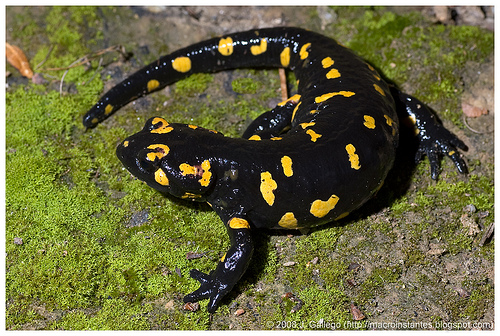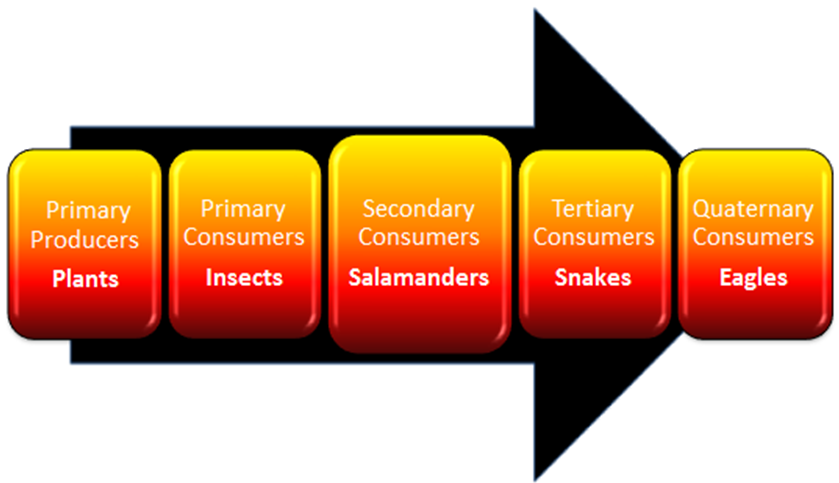Salamandra salamandra - Fire Salamander
Interactions

In most cases, fire salamanders try to avoid
other species. They are always hiding and burrowing, leaving
little chance to interact with other organisms. However, even
though they usually do not directly come into contact with other species
in their habitat, they indirectly rely on other organisms every day.
An example of this is the burrows that they live in. Most
salamanders in general are not the best at digging deep holes, so they
will often live in abandoned
rabbit burrows. Other than this
interaction between fire salamanders and rodents, the only other
interaction they have with other species is when they are out at night
hunting.
Trophic Level
In terms of the food chain, there are five trophic levels at which organisms fall into depending how they get their energy. An organism can be a primary producer, primary consumer, secondary consumer, tertiary consumer, quaternary consumer, or decomposer.
• Primary producer: An organism that uses water and light in order to produce their own energy; plants are an example.
• Primary consumer: Organisms, such as insects, that consume primary producers.
• Secondary consumer: Secondary consumers are carnivores that consume the plant eating organisms. Fire salamanders are secondary consumers, as their diet consists mostly of insects.
• Tertiary consumer: An organism that feeds on other carnivores, more specifically the secondary consumers. An example of a tertiary consumer is a reptile such as a snake.
• Quaternary consumer: These organisms are at the top of the food chain, they are not eaten by any other organism.
• Decomposers: These organisms feed on dead organisms. Decomposers will often be certain types of fungi or bacteria.

The above image is one that I created in order to show the typical food chain showing the fire salamander as a secondary consumer.
Because of the venom that the fire salamander secretes from its skin as an adult, they do not have too many real predators. On occasion, a snake or bird might eat a fire salamander by accident, and if they do not die from the toxins, they will for sure remember not to mess with the fire salamanders ever again. However, when the fire salamander is in its larval stage, it has many more predators, as they do not produce the potent toxins in this life stage. Small mammals, fish, and birds will eat fire salamander larvae.
%20on%20a%20rock.jpg)
Return to Reproduction or go to the
Home page here.